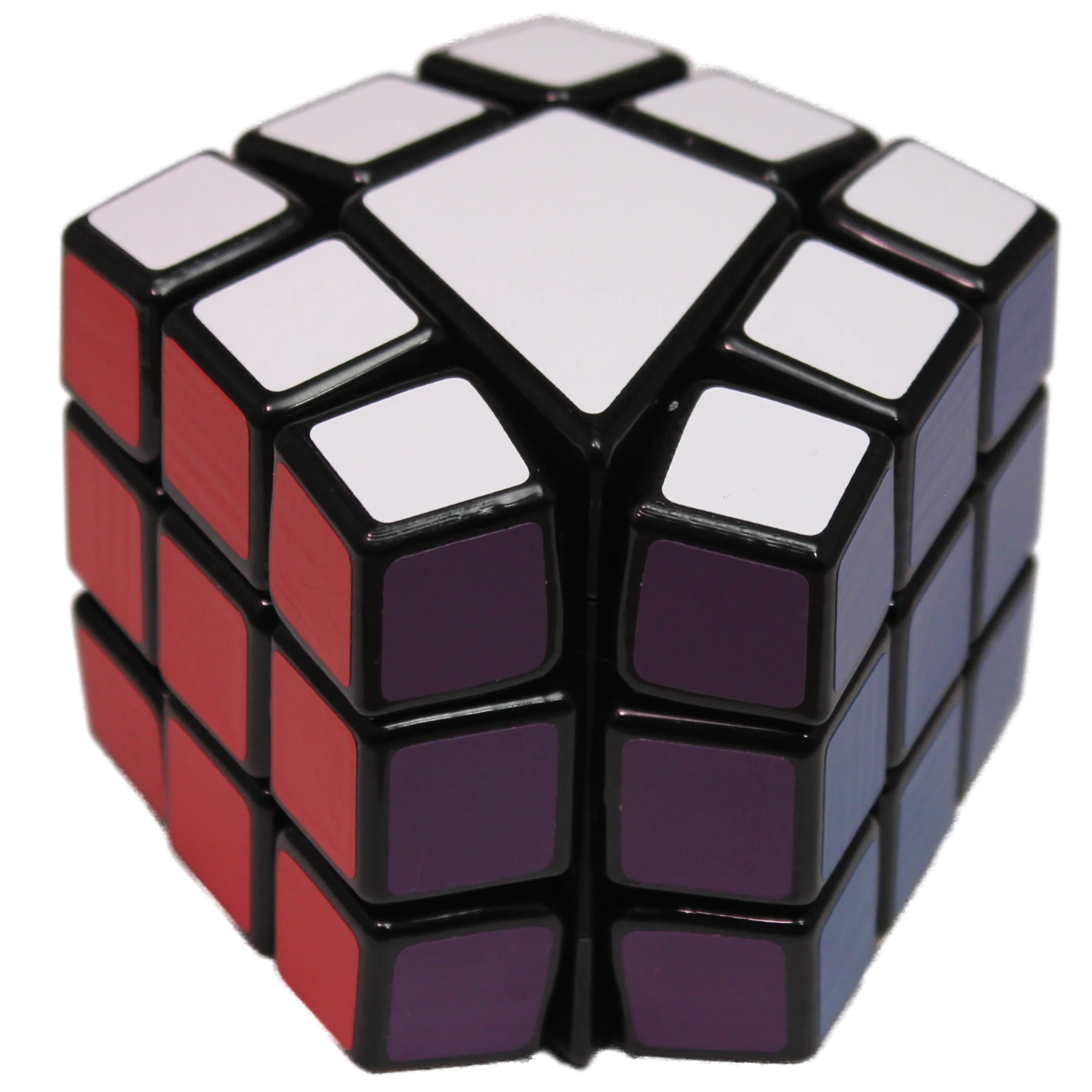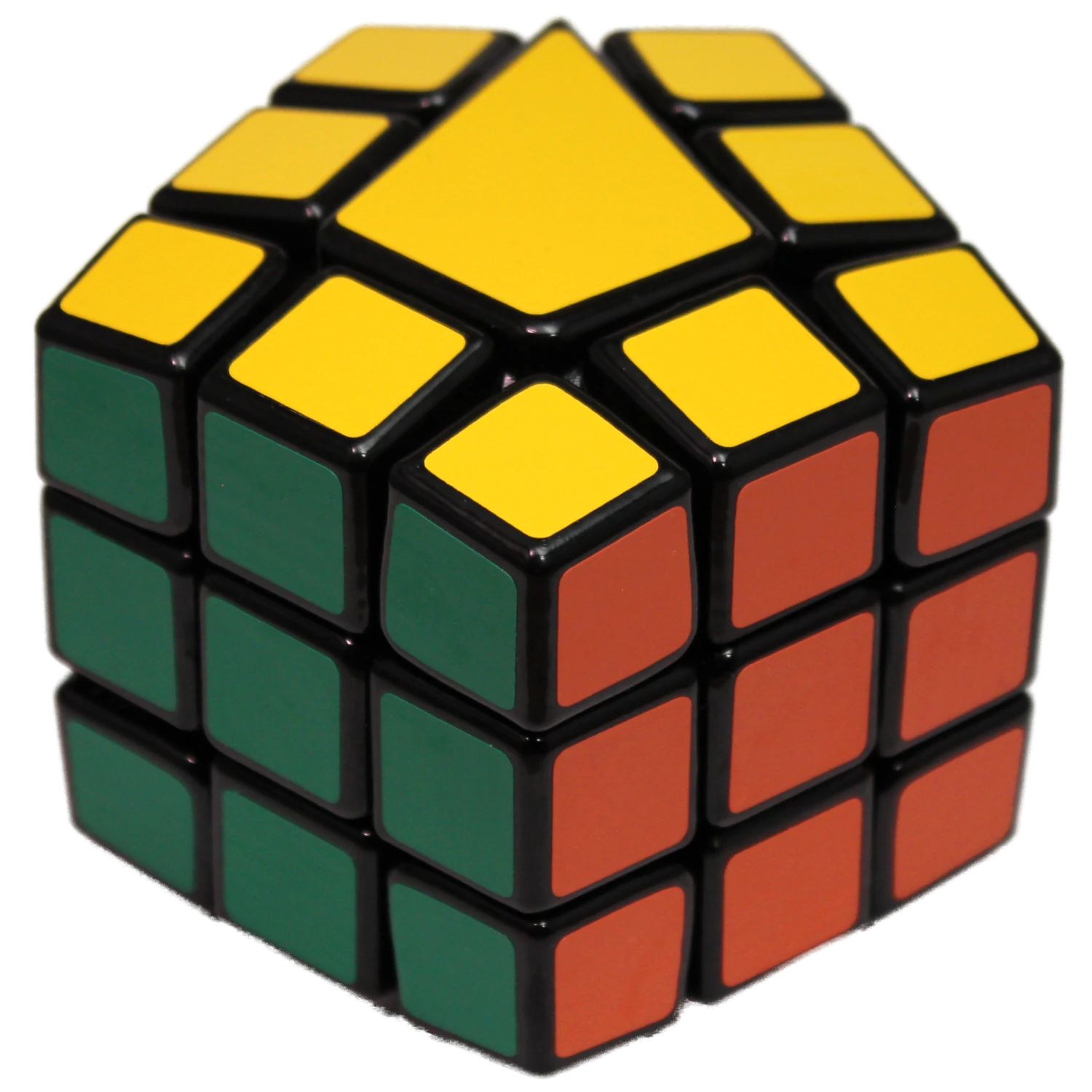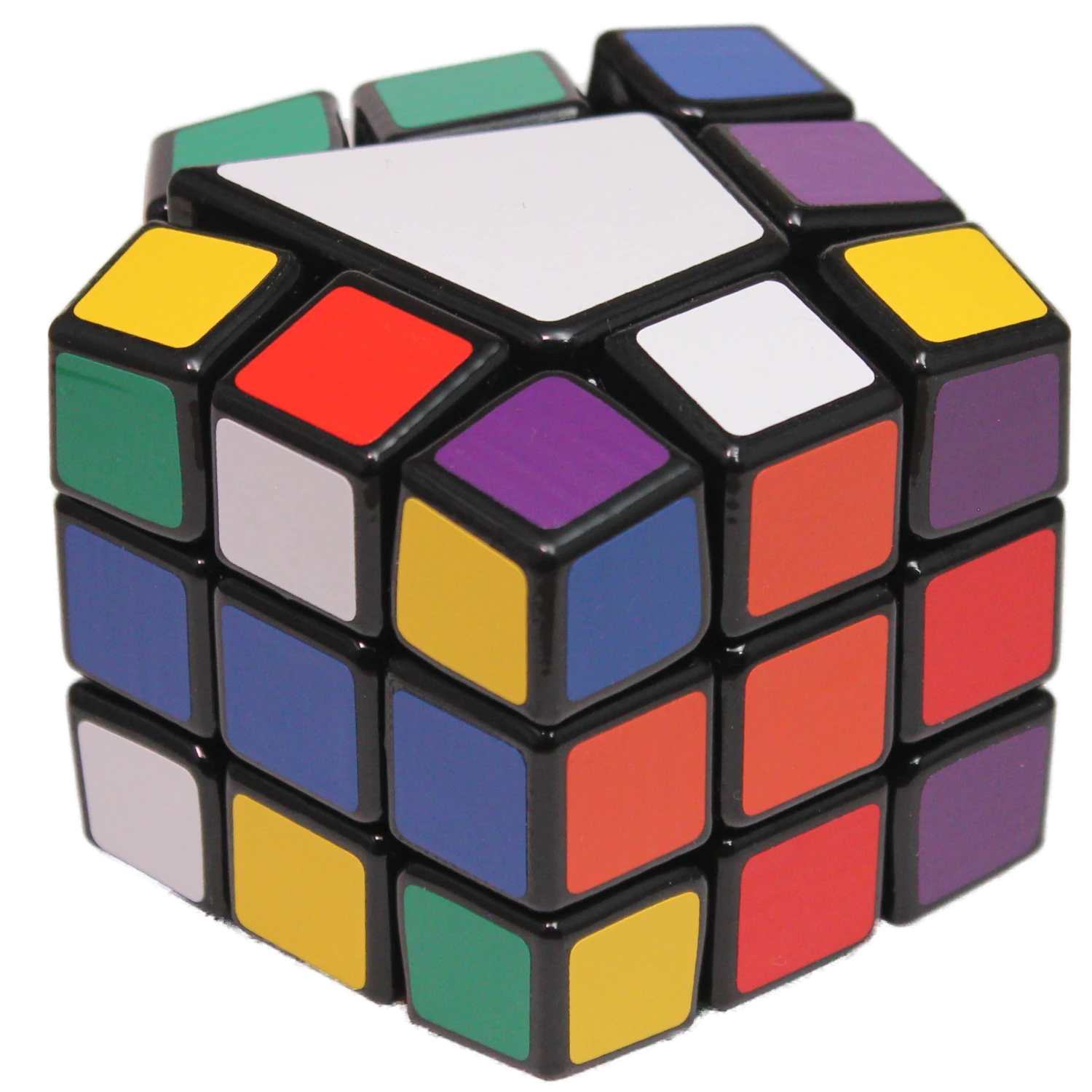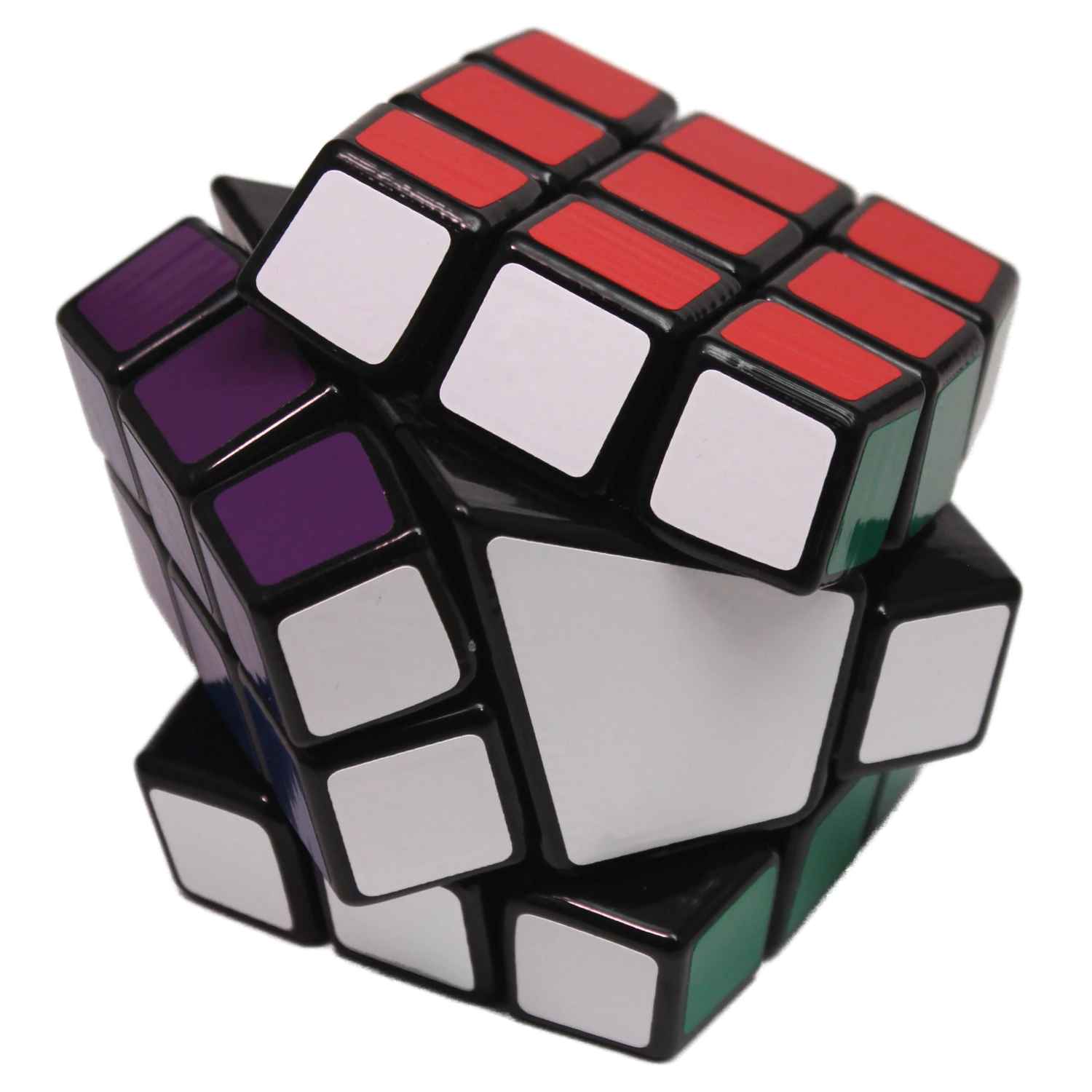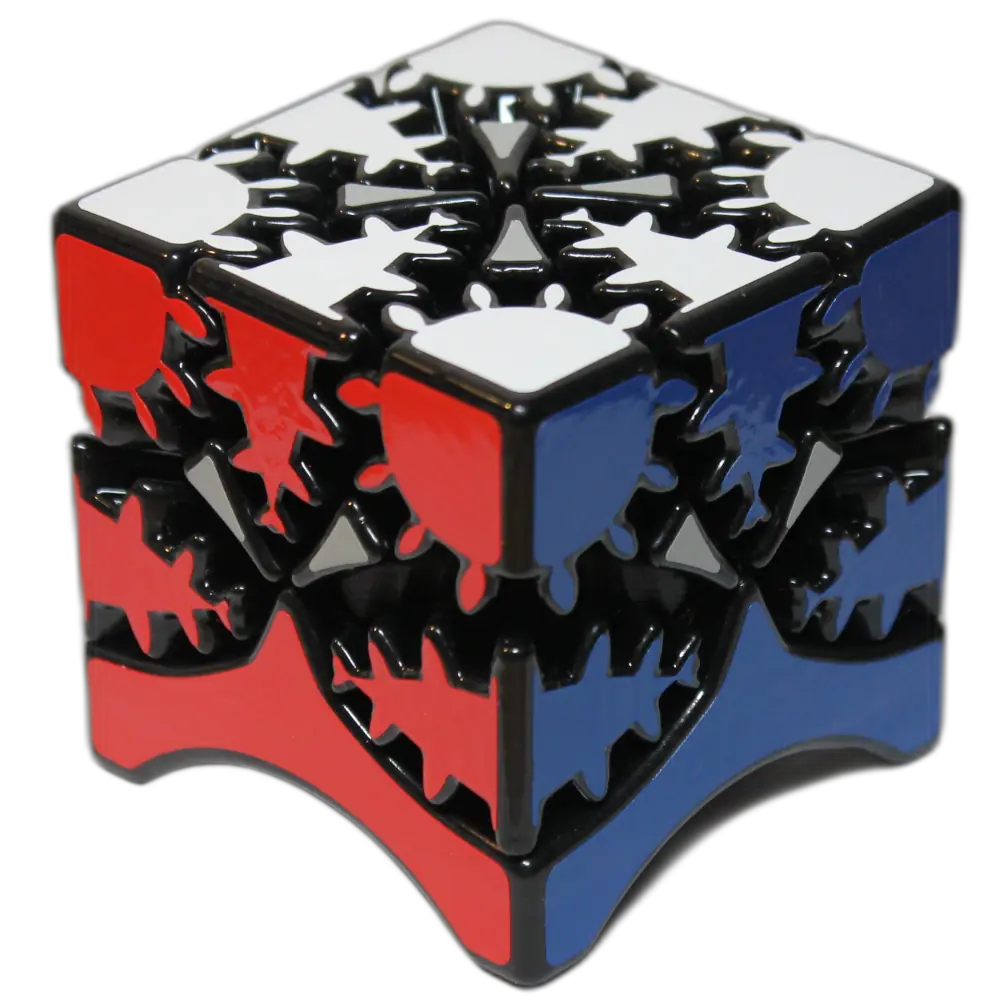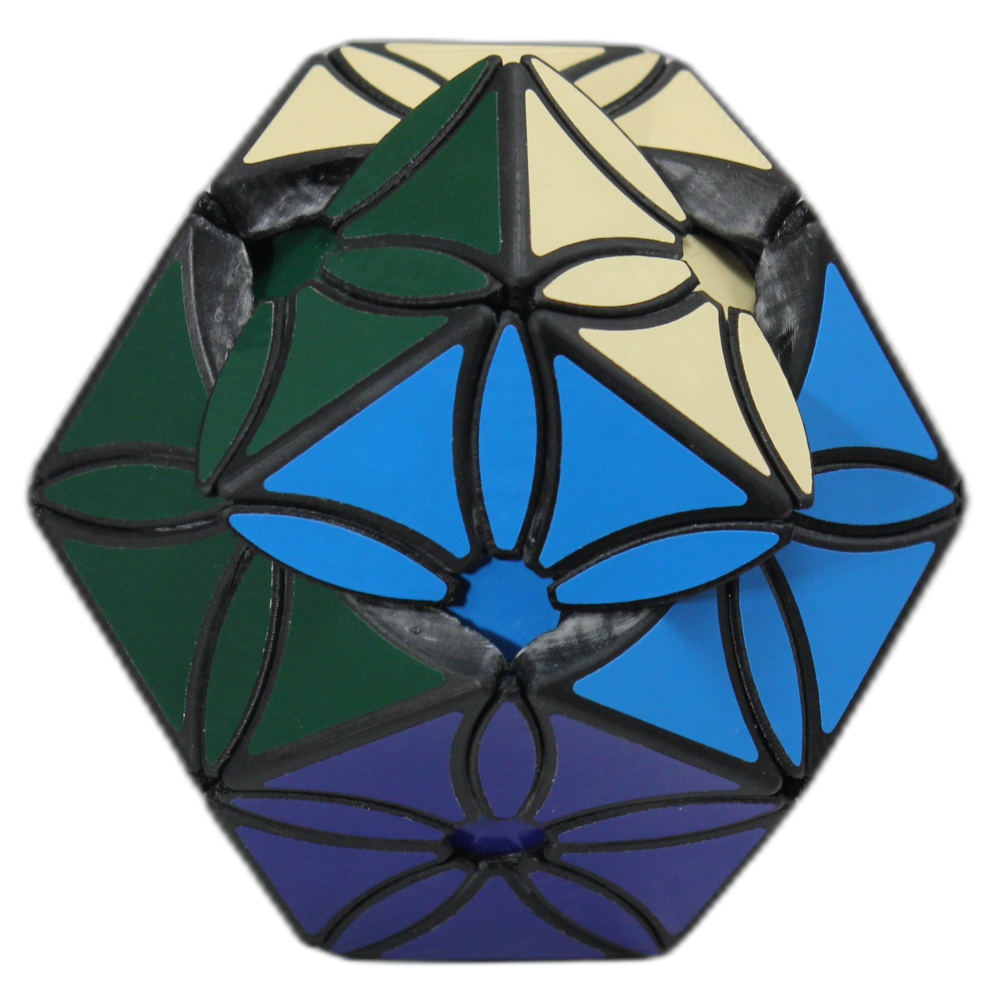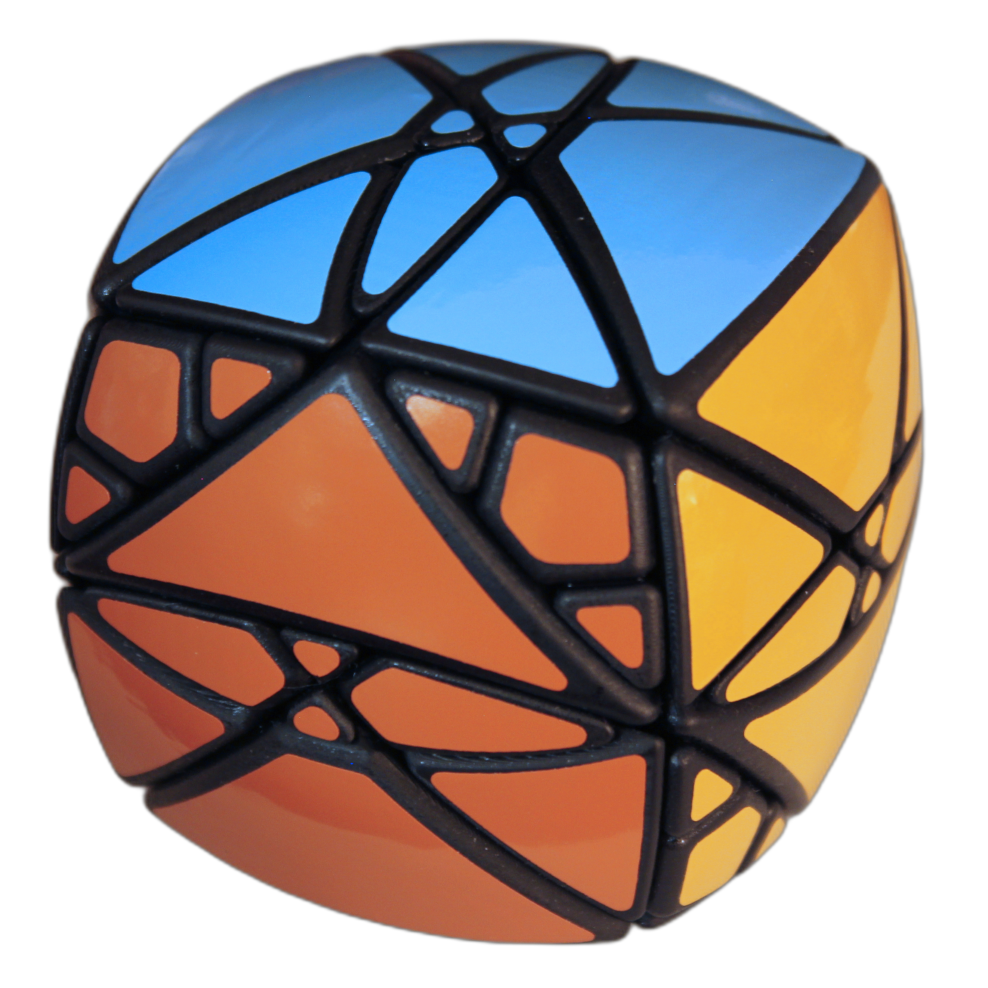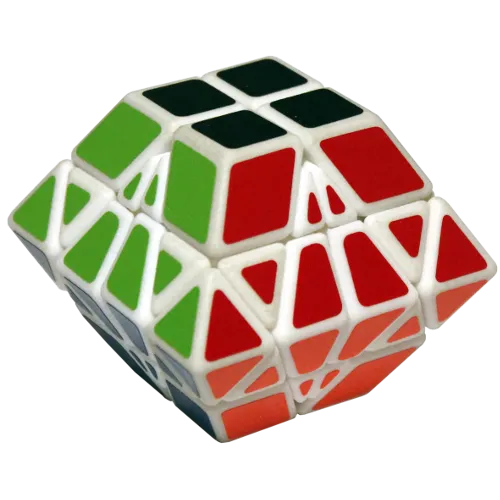Video: https://www.youtube.com/watch?v=c0AkCcUzcj8
Print it yourself: https://chandler.io/posts/2025/03/print-it-yourself-illegal-slice-cube/
The Illegal Slice Cube continues my exploration of finite group theory in twisty puzzles. It combines two unusual concepts:
Oskar van Deventer’s Illegal Cube
- Fudging permits 90° turns, which normally wouldn’t be allowed on a 3x3 pentagonal prism.
Slice-only puzzles (like Slice Rex Cube)
- Opposite sides turn simultaneously - like a 3x3 Rubik’s cube with middle turns only.
Unlike some of the previous puzzles in this series, this one is pretty difficult to solve.
It has roughly 44 quadrillion possible states, about 1/1000th that of a regular Rubik’s cube. The piece behavior is similar to an unrestricted puzzle, except the edges have fixed orientation, and the corner permutations are bound by the rules of the Mathieu M10 group. It’s challenging to solve as a result of the large number of permutations and restricted movements.
Permutation Breakdown
Rubik's Cube: 43,252,003,274,489,856,000
ISC: 44,123,922,146,304,000
10 corners, 13 edges
Edge orientations: Fixed = 1
Edge permutations: 13! / 2 = 3113510400
Corner orientations: 3^(10-1) = 19683
Corner permutations: M10 = 10×9×8 = 720
The most interesting step of the solution is positioning the corners. This M10 representation, like other natural Mathieu representations, has an intuitive point stabilizer series. As a result you can position the first two corners one at a time, leaving the remaining 8 corners in one of 8 quaternion group states, any of which can be solved with a set of 2 algorithms.
I took a different approach than usual in designing this puzzle, starting with a list of all the planar graphs that can be used to generate the Mathieu M10 group. When I found one that looked easy to construct, I adjusted the points to match a known 3D geometry, in this case the corners of a pentagonal prism.


